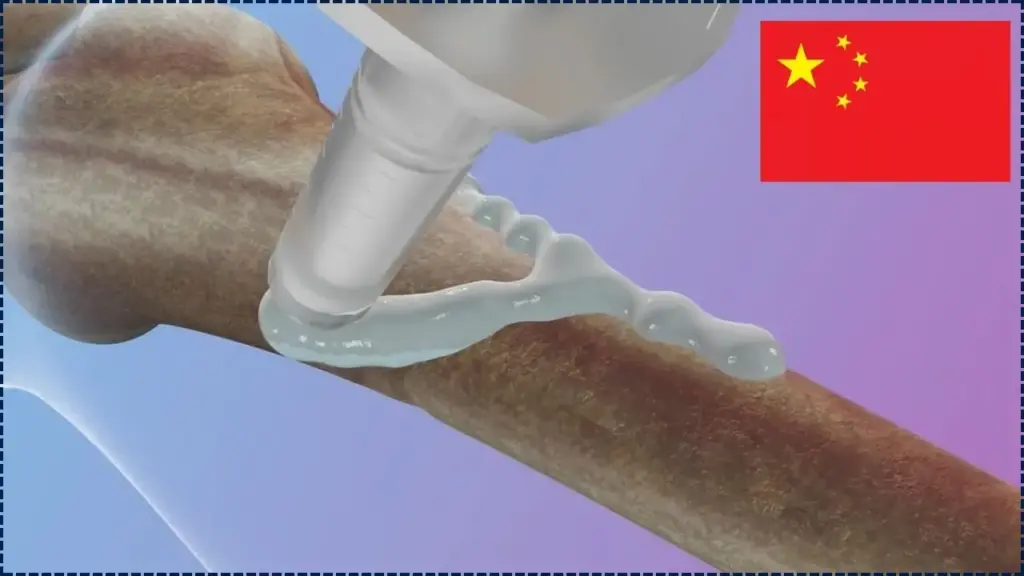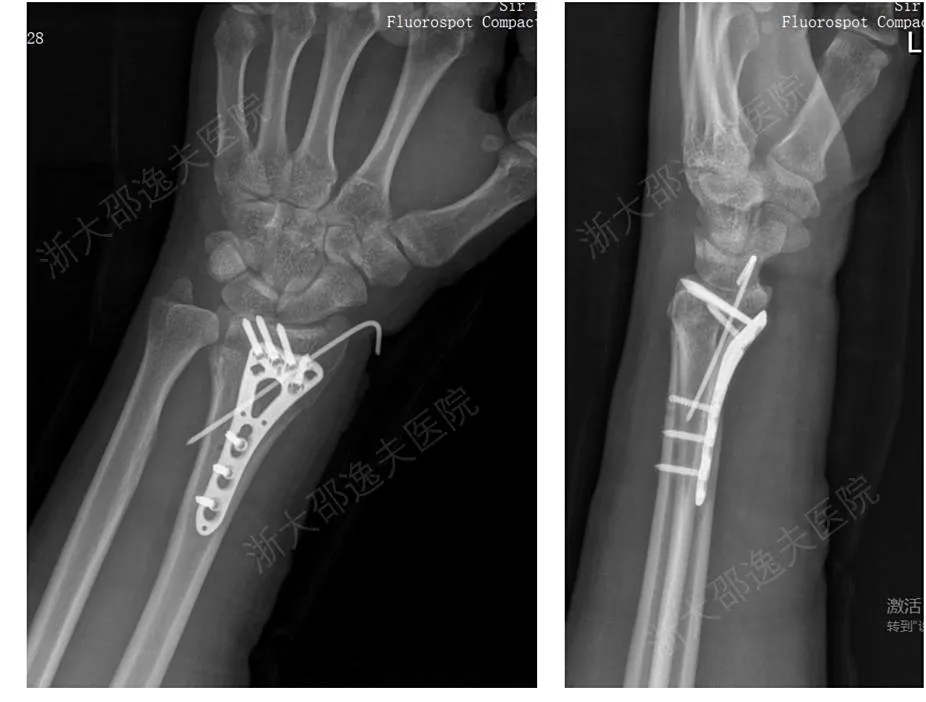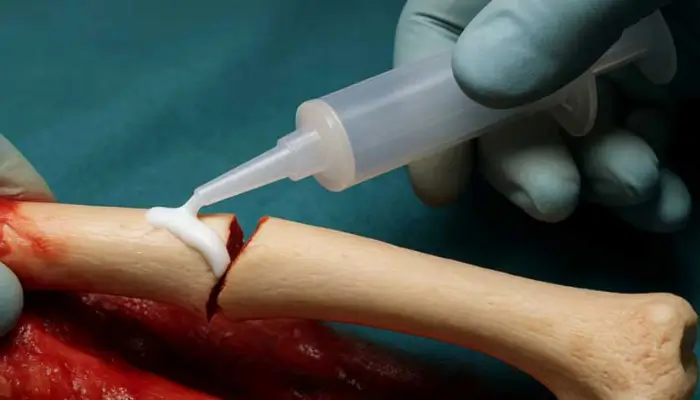Chinese scientists have introduced a bone glue that reportedly repairs fractures in three minutes without surgery or metal implants — a potential breakthrough that could transform orthopaedic care. Experts welcome the innovation but warn that its long-term safety and performance remain unverified pending peer-reviewed trials.

The Bone-02 bone glue is among 2025’s most closely watched biomedical innovations. Its potential to replace metal implants and revolutionise fracture care is immense, but extraordinary claims require extraordinary proof. Until independent research confirms its efficacy, Bone-02 stands as both a bold step forward — and a reminder that in science, credibility rests on evidence, not speed.
Table of Contents
A Promising Leap in Orthopaedic Innovation
Researchers at Sir Run Run Shaw Hospital, part of Zhejiang University in China, developed the compound, named Bone-02. According to a university statement, the adhesive binds fractured bone fragments in wet, blood-rich conditions — an environment where most glues fail — and hardens in minutes before gradually dissolving as the bone heals.
The inspiration came from marine biology. “We studied how oysters cling to rocks under water and replicated that adhesion mechanism,” said Dr Tao Shen, lead scientist on the project, in remarks reported by China Daily. The team claims bonding strengths exceeding 400 pounds in lab tests and successful repair of small-bone fractures in clinical settings.

From Bench to Bedside: Early Clinical Use
Local reports indicate Bone-02 has been used on over 150 patients, primarily for wrist and ankle fractures. In one case cited by The Times of India, a patient’s wrist fracture was repaired through a small incision, eliminating the need for metal fixation.
Orthopaedic experts, however, caution against premature conclusions. “The adhesive’s setting in three minutes does not mean the bone biologically heals that fast,” said Dr Meera Narayanan, orthopaedic surgeon at Apollo Hospitals, Chennai. “We need peer-reviewed studies demonstrating stability under physiological stress and absence of immune reactions.”
No data has yet appeared in major scientific journals, and Bone-02 is still awaiting international regulatory clearance. Chinese authorities have reportedly approved limited clinical use under controlled supervision, but the National Medical Products Administration (NMPA) has not issued public documentation of large-scale trials.
How Bone-02 Works
Bone-02 combines bioceramic nanoparticles with a biopolymer matrix derived from amino acids, enabling adhesion to wet bone surfaces. It forms a tight interface and gradually bio-degrades as natural bone tissue regenerates. This eliminates the need for metal plates, screws, or rods, which often require a second surgery for removal.
By mimicking the underwater adhesion chemistry of marine molluscs, Bone-02 overcomes a long-standing challenge in orthopaedic materials: bonding strength in moist conditions. Early lab results suggest minimal inflammation or tissue rejection, but these findings remain preliminary.
Comparison with Existing Bone Adhesives
Conventional materials such as polymethyl methacrylate (PMMA) cement and fibrin-based glues have been used in orthopaedics for decades, primarily to fill gaps or stabilise prosthetics. However, they lack the mechanical strength required for most fractures and can release toxic by-products.
“Bone-02’s molecular design appears to solve these issues theoretically,” explained Dr Rajesh Kumar, biomaterials scientist at the Indian Institute of Technology (IIT) Delhi. “But unless the results are replicated in multicentre trials, the claims should be treated with scientific caution.”
Internationally, researchers at Harvard University’s Wyss Institute and ETH Zurich have been developing similar adhesives using bio-inspired polymers. Bone-02’s claimed success, if confirmed, could place China at the forefront of biomedical adhesive technology.
The Regulatory Landscape
The U.S. Food and Drug Administration (FDA) and the European Medicines Agency (EMA) classify bone adhesives as Class III medical devices — the most tightly regulated category, requiring multi-phase safety and efficacy trials. Experts note that without such validation, global distribution remains distant.
“Even a small implantable material must pass rigorous biocompatibility and toxicology tests before approval,” said Dr Alok Mehta of the All India Institute of Medical Sciences (AIIMS). “It’s encouraging to see innovation, but translation from a hospital lab to global clinics is a long road.”
As of October 2025, Bone-02 has not been listed in the U.S. National Institutes of Health clinical trial registry or the World Health Organization’s International Clinical Trials Platform.
Potential Impact on Global Healthcare
If proven safe, Bone-02 could dramatically reduce treatment time and costs, especially in low-resource regions where access to orthopaedic surgery is limited. Non-invasive application and rapid fixation could shorten hospital stays and minimise infection risks.
“Adhesive-based fixation could redefine trauma care,” said Professor Wei Huang, biomedical materials expert at Zhejiang University. “In rural hospitals or disaster zones, the ability to stabilise a fracture without metal hardware would be transformative.”
Analysts estimate that reducing implant use could lower fracture-care costs by 20–40 percent, though such figures remain speculative until large-scale deployment.
Ethical and Scientific Caution
While the headlines have generated enthusiasm, medical ethicists urge transparency. “Deploying an experimental material outside formal trials risks undermining patient safety and scientific credibility,” warned Dr Anita Gupta, spokesperson for the Indian Orthopaedic Association (IOA). “Ethical use requires informed consent and publicly available results.”
Experts stress that robust data — not media claims — must underpin medical innovation. A lack of peer review could delay global acceptance even if the adhesive performs well.

Broader Scientific Trends
Bone-02 exemplifies a surge of interest in biomimicry — technology modeled on nature’s own designs. Similar approaches are emerging in wound care, dental reconstruction, and neural repair.
Researchers also point to the use of artificial intelligence (AI) in designing next-generation materials. Machine-learning algorithms can simulate molecular structures to predict adhesion strength, accelerating discovery cycles.
“The fusion of AI with biomaterials science could compress what once took decades into a few years,” said Dr Natalie Brooks, polymer chemist at the University of Cambridge. “If Bone-02 succeeds, it will validate not just the material but the entire bioinspired design philosophy.”
Related Links
Breakthrough Shows Quantum Computers Can Work Even With Imperfect Links
AI-Powered Robots Can Now Take Apart Your Smartphone Piece By Piece
Global Reaction and Public Discourse
News of Bone-02 spread rapidly across global media and social networks.
Some commentators hailed it as “a medical miracle,” while others called for patience and evidence. Editorials in Nature Asia and The Lancet Regional Health urged restraint, emphasising that “adhesion does not equal healing.”
The Road Ahead
The Zhejiang research team plans to publish its findings in an international peer-reviewed journal later this year and initiate multicentre human trials across China. Collaboration with European institutions is reportedly under discussion.
If confirmed, Bone-02 could represent the first clinically viable bio-absorbable fracture adhesive, a milestone decades in the making. Until then, most experts consider it a promising but unproven development in the evolving field of regenerative medicine.



















